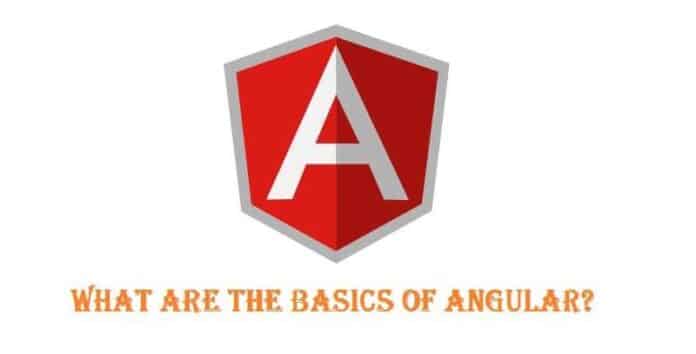
With fierce competition by numerous websites against each other to draw web traffic tagged “the battle for web survival”, there arose a dire need to have highly interactive web and mobile applications, to ensure the success of businesses. 2009 was the year and that is how Angular came into existence.
It was first developed by Google in 2009 to a warm reception from the development community. It is also maintained by Google and ever since its invention, there have been 11 more versions with the latest one being Angular 12 which was released on May 12th, 2021.
For a web designer, it is important to first have an understanding of the Angular basics which are fundamental to its architecture before proceeding into the more exciting modifications.
Features of Angular
To begin with, it is important to understand the features of Angular. This is because its open-source nature allows for frequent upgrades to ensure that new operational challenges are addressed as soon as they surface.
Angular combines top-notch features developed by some of the best technological minds in its community to enable web developers to build scalable and powerful web applications with ease. This is what elevates Angular above other frameworks and makes it appealing to many users. These definitive features are:
- Code generation. This is the process of compiling source code in an output form that is clean and executable by processors on various OSs like Windows, Linux, or Mac OS to run efficiently without requiring specific inputs for the source code.
- Interpolation. This is the ability to embed expressions into marked-up texts using double curly braces as delimiters while also serving as a perfect alternative to property binding.
- Scalability. An essential feature of Angular is that it is very easy to scale due to its architecture and its powerful Command Line Interface(CLI).
- Cross-platform. This means that Angular has tools that enable one to utilize one codebase to build native applications or replicas for multiple platforms e.g. Android or iOS. For instance, Angular is used widely for developing progressive web applications (PWA). This is a web application that behaves like a native application only that it has the capability to operate smoothly even in minimal to no network coverage and requires no installation to use it. It is also faster than your typical web application, which makes it a very powerful feature of Angular.
- Speed and performance optimization. Angular’s major advantage is that it is by default very fast and high-performing. Additionally, it also has performance optimization techniques like lazy loading, Onpush, and detach change detection strategies that can still be harnessed.
Key Angular Concepts
Angular in general, a powerful front-end framework, is most suitable for supplying components or tools that enable web developers to generate codes that are not only simple and user friendly but also readable and maintainable.
As mentioned earlier, Angular has been written in typescript, and therefore any person or developer looking forward to using Angular should be well versed with the programming languages of Typescript, HTML, and javascript for a smooth and easy working time. That being said, there are some core concepts that if well understood, then you are on your path to mastering Angular. These include:
- Angular NgModules
Also known plainly as Angular modules, these are deployment subsets of the Angular application used to split it up into smaller but functionally cohesive compartments. A NgModule specifies the components, directives, pipes, and services of the particular application.
- Angular components
These are the Angular basics that are considered its building blocks and are organized into NgModules. These components control a screen patch known as a view, which Angular can select from and modify based on program logic and data.
- Angular templates
These are HTML snippets that direct Angular on how to render the component in an angular application. UI sections are able to be hidden, shown, or modified together as a unit. This is possible because the views have been arranged in order of hierarchy.
- Angular Metadata
Metadata refers to data about data. When you configure a component in Angular, you create metadata defining the expected behavior of its class. Essentially, the metadata of an Angular component directs Angular to where to find the building blocks required to create the component and its view.
- Data binding
Data binding is a fundamental concept in Angular in which data is synchronized automatically between the component and the view. This technically means that in the event that new data comes in, then the updating process of both the component and the view has been automated through Angular.
- Angular Directives
These are specific HTML attributes that direct Angular to change the nature or tendencies of DOM elements. There are three types of Angular directives. They are:
- Components
- Structural directives
- Attributional directives
- Angular Services
Angular services are singleton objects consisting of functions, features, and the values that an application needs to run throughout its lifespan. Services have very specific roles thus Angular components are distinct from services to enhance modularity and re-usability.
- Dependency Injection
Dependency injection basically means that a class is independent of its dependencies. This is an architectural pattern in which dependent objects or services (also known as dependencies) are passed between each other to complete tasks as they are usable as services. This model allows for the clear division of tasks according to dependence. Dependency injection implementation is enabled by an angular injector.
Conclusion
Any web developer worth his salt will agree that Angular was the best thing to have ever happened in the world of web development. A thorough and in-depth mastery of the basics of Angular can enable a developer to navigate through his or her roles and responsibilities with ease. Moreover, a grasp of the basics coupled with in-depth knowledge and understanding of the numerous features and concepts found in Angular should distinguish the seasoned web developer from the others.

